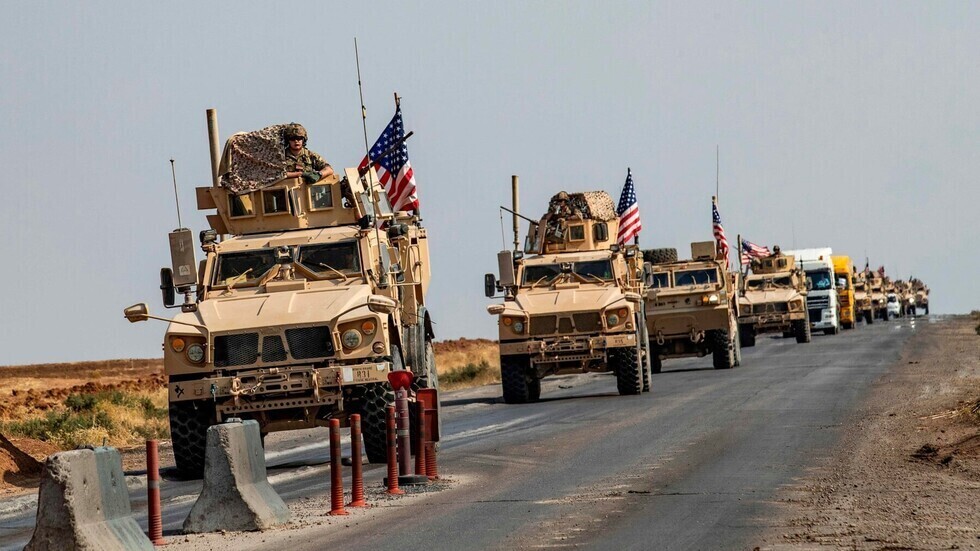The impact of the press in Washington revolves around discussions concerning options and alternatives to its policy or involvement in the Syrian Jazira region, oscillating between two extremes:
The first involves bolstering a long-term military and political presence, despite the challenges and dangers it entails. This entails increasing the number and equipment of its forces in the Jazira region and along the Euphrates line, as well as augmenting the supply of weapons, various military and technical assistance, and political, media, and organizational support to the Autonomous Administration and the SDF.
The second extreme involves withdrawal, contingent upon the existence of viable local alternatives that the United States can rely on, currently represented by the autonomous administration in the Jazira region. This approach entails strengthening armed mercenary tribal structures in the Euphrates line and the vicinity of al-Tanf, albeit with the recognition of potential challenges and risks, including the possibility of failure.
Who’s Who Taher al-Kayali: the Shadows of Illicit Trade and Political Dynamics
Currently, the predominant approach appears to favour the first line while considering the second as parallel rather than alternative. In practice, however, these two approaches overlap and complement each other.
Thus, Washington is exploring ways to maintain its presence in the Jazira and the Euphrates line, albeit with reduced risks and threats. If withdrawal becomes necessary, it would be executed to a degree that does not compromise perceived interests and priorities in the region, both in Syria and the broader regional context. It’s important to note that the U.S. presence in Syria is driven by various considerations beyond the Syrian conflict, including those related to the Autonomous Administration, the SDF, and counterterrorism efforts, albeit Syria’s interests are of lesser significance in this calculus.
Washington is navigating a complex landscape, striving to “intertwine” various elements, balance challenges and opportunities, and manage tensions while assessing multifaceted options. The situation is characterized by ambiguity, with intersecting gray lines and uncertainties, implying both probabilities and their opposites.
Additionally, Washington continues to coordinate, manage, and control interactions with Tehran and, to a limited extent, Damascus. It balances relations between its main allies, Ankara and the SDF, maintaining its alliance with Ankara while also coordinating with groups like Jabhat al-Nusra and jihadist networks associated with it.
Moreover, the U.S. is moving beyond conventional strategies, exploring options such as restructuring the Autonomous Administration and SDF and establishing armed structures among Arab tribes in the Euphrates line. This aims to create a “separation zone” or “buffer” that can be leveraged against various actors, including the Syrian army and its allies, Arab tribes opposing the U.S. and the SDF, as well as Iranian and Hezbollah forces.
The concept of a “separation zone” is intended to delineate a zone between areas controlled by the Autonomous Administration and those held by the Syrian army and its allies. This is significant from Washington’s perspective as it seeks to alleviate tensions between the SDF and Damascus-aligned Arab tribes, reassure tribes allied with the U.S. about the extent of SDF control, and address Turkish concerns regarding the SDF’s presence along the Euphrates line. There is ongoing debate about the nature of the entity that Moscow, Tehran, and Damascus claim Washington is fostering on the island.
It acts as a “barrier” against Iran, implying that tribes may align more readily with Washington over Tehran, influenced by religious and sectarian considerations. However, it’s worth noting that the SDF is less inclined to exploit religious or sectarian divisions in the conflict and avoids fostering “sectarian polarization.” While the SDF aligns with Washington and opposes Tehran, it refrains from mobilizing along religious or sectarian lines. Governed by Ocalan’s modern, civil, and secular principles, both the Autonomous Administration and the SDF prioritize inclusive governance.
This aligns with the previous point, as tribal forces serve as a local armed component utilized by the U.S. to target Syrian, auxiliary, and allied forces, thereby impeding Damascus and its allies’ influence in the regions of the Euphrates line, the Syrian Badia, and the border areas with Iraq.
Additionally, the U.S. is advocating for “objective consensus” between the SDF and both Turkey and the Kurdish region in northern Iraq. Discussions often revolve around establishing a “line of consensus” that the U.S. guarantees between the SDF and Turkey.
Maintaining open channels of communication between Damascus and the SDF is crucial, as any mutual understanding between these parties reduces real and escalating risks in the region and constrains U.S. strategies in the Syrian Jazira. The U.S.’s closer alignment with Turkey over the SDF is evidenced by numerous indicators and requires minimal effort to illustrate.
The Jazira region remains volatile, facing near-constant aggression from Turkey, alongside a U.S. presence that relies on local allies or proxies while claiming to combat terrorism. Amidst the persistent threat of conflict between armed factions, the region teeters on the brink of explosive tensions, with overlapping and intricate stakes. Furthermore, increased American involvement in the region or the establishment of conditions conducive to its interests heightens the necessity for resistance policies, rendering American engagement more of a risk than an opportunity from the U.S.’s perspective. Thus, fulfilling its obligations becomes imperative for the U.S.
This article was translated and edited by The Syrian Observer. The Syrian Observer has not verified the content of this story. Responsibility for the information and views set out in this article lies entirely with the author.


